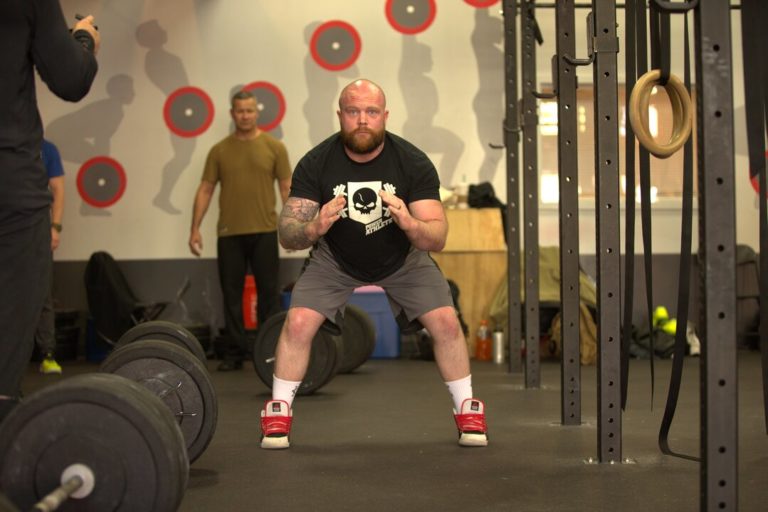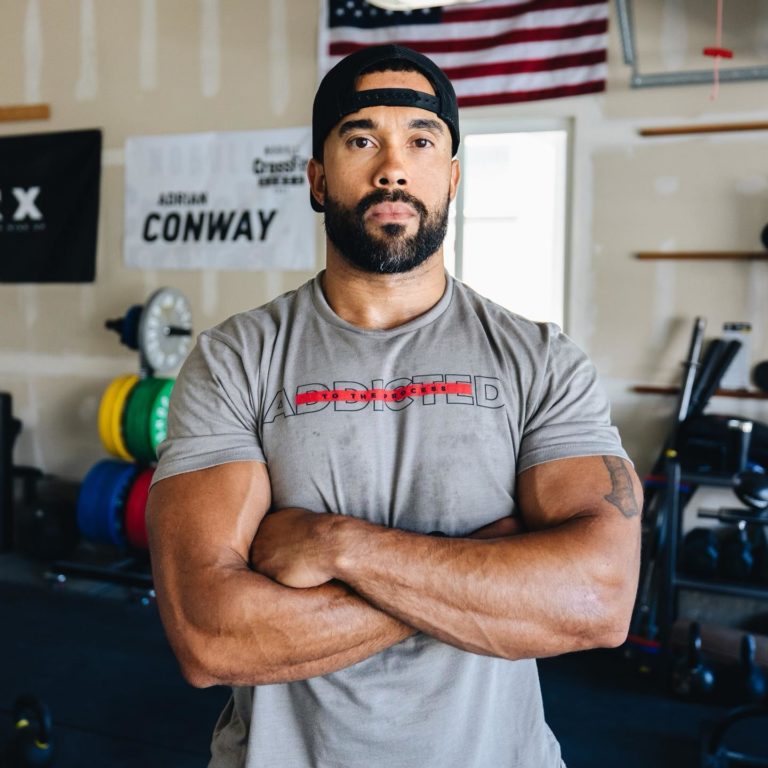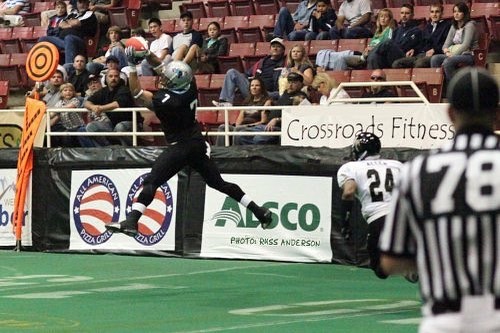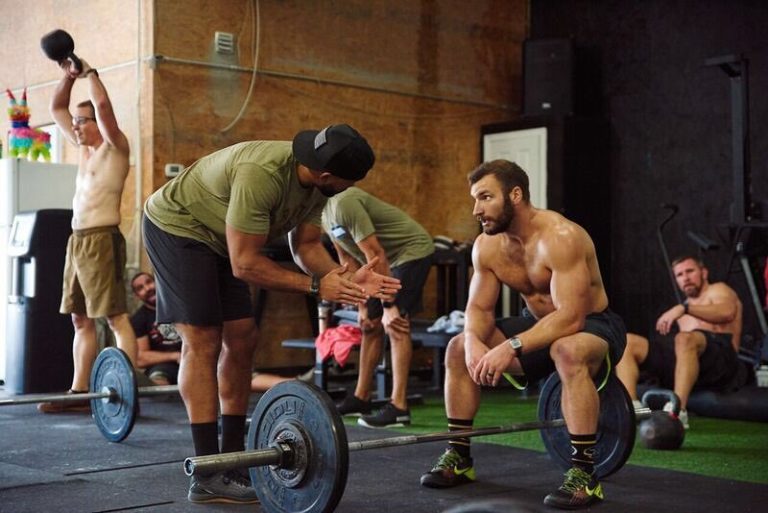On game day, there is no predicting what an athlete will face. But many athletes tend to focus all their training on movements they assume they’ll encounter on the field.
A football player knows they are going to work really hard for about three to seven seconds and then rest for 30 seconds. So, the athlete will train for those sprints. But what if on the field, they suddenly have to execute a no-huddle offense, which cuts their rest short? Or, let’s say you’re a basketball player. There is an understanding that the sport is fast-paced and relatively low contact. But what if you’re matched against a team that moves slower and is tremendously physical?
This is where CrossFit comes in.

CrossFit was designed to optimize human performance and prepare people for the unknown and unknowable — whether in sport or in life. So when an athlete is faced with a challenge specialized training didn’t account for, they are ready to take it on.
“There’s probably more opportunity to improve your performance in your sport chasing headlong the thing you don’t want to see come out (of the Hopper) than putting more time in that thing for which you feel you are ideally qualified should it arise,” CrossFit founder Greg Glassman said.
By utilizing CrossFit training alongside specialized training for sports, an athlete will be better prepared for any challenge thrown at them on game day.
CrossFit Football
Meet Adrian Conway, a five-time CrossFit Games competitor, a former CrossFit Seminar Staff Trainer, a CrossFit Games analyst, and a coach of 18 years.

But before Conway became a staple in the CrossFit space, his passion for sports started with football.
Having grown up in a pigskin-loving family, Conway said the sport was always on the TV at home, and it was the players he saw on the screen that inspired him to pursue the sport himself. Not only did football draw him in because he loved to play it, but he also saw the potential to make a career out of that passion.
“No one in my family had previously gone to college before,” Conway said. “Football was going to be my ticket.”
Conway started playing football in the third grade and received a scholarship to play running back at Weber State out of high school. After graduating, Conway played two years of professional arena football. That is where he discovered “CrossFit Football,” a program designed by former NFL player John Welorne as a branch-off of the CrossFit methodology specifically designed for power athletes.

“I wanted to milk my football career as long as I could,” Conway said.
Conway began to train CrossFit to help him perform better on the field, noticing that practicing functional movements with proper form made his body more durable.
“Throughout my college career, I experienced a lot of injuries. And a lot of it was due to the redundancy of the very specified types of movements that we train all the time,” he said.
As Conway learned more about the CrossFit methodology, he was able to apply more variance to his training, adding in movements such as the overhead squat and Turkish get-ups.
A Career in Preventing Mistakes
When Conway was in high school, he took a class on athletic training. He thought it would be a good career path to pursue to keep football in his life when he was ready to hang up his cleats.
“In my mind, at that time, I was like, ‘Cool, I’m going to coach athletes to be athletic,’” he said. “And then it was unveiled to me that athletic training is more about treating the injuries that happen on the field.”
Conway wanted a profession that wasn’t so fixated on fixing the mistakes athletes had made or injuries they had sustained on the field. He wanted a profession that would prevent that. So he chose to pursue human performance at Weber State, a degree that would focus on the function and optimization of the human body.
That led him to his 18-year coaching journey.

Upon graduating from Weber State in 2008, Conway began coaching at Basics Sports Medicine, a physical-therapy clinic in Ogden, Utah, applying what he had learned in college to help high school, collegiate, and professional athletes train for their sports. His practice was focused on helping athletes become more durable, prevent injury, and increase their performance. In November of 2010, Conway was researching training methods to improve his coaching and ran across the training directory on CrossFit.com. He asked the clinic if he could take the CrossFit Level 1 Certificate Course as a continued-education credit. They paid for Conway to get his certificate.
Just a few months later, Conway competed in his first CrossFit Open, jump-starting his successful CrossFit Games career. In 2014, Conway began to coach CrossFit online with Brute Strength.
Since then, Conway has competed at the highest level of CrossFit competition, taught the CrossFit methodology to aspiring coaches as part of CrossFit’s Seminar Staff, and in 2020, formed TTRU Fitness to provide CrossFit programming for any athlete looking for better sports performance or health.
Preparing for the Untrainable
With 18 years of coaching experience, specifically in human performance, Conway has seen just how impactful CrossFit can be on athletes training for their sports outside of the gym.
Although every sport will have training specific to the sport itself, Conway said CrossFit can prepare athletes for untrainable moments while preventing injury.
Conway has coached football players from Weber State, Brigham Young University, and the surrounding area in preparation for Pro Days — a locally sponsored event often hosted by a college to showcase their athletes to NFL scouts — and the NFL Scouting combine, a weeklong showcase in which college football players perform physical and mental tests in front of coaches, general managers, and scouts.
The point of these showcases is to throw athletes into the unknown. The scouts are testing athletes on their weaknesses. They want to see who is in shape and who will survive on the field. Alongside skill testing for their specific positions, athletes will undergo physical tests designed to measure their overall physical fitness, assessing speed, agility, strength, and more.
“These athletes come to me specifically with a desire to run faster, jump higher, do 225 lb on the bench press as many times as they can … but in the same token, they need to appear well muscled and relatively lean,” Conway said. “The scouts want to see that they’ve been committed to the weight room for four years, that they’re committed to the greater good for the team, and that they’re hard workers. … I would utilize CrossFit as the base for this.”
Over the course of six weeks, the training would be heavily emphasized on CrossFit to develop basic general physical preparedness (GPP). Conway would have his athletes do drills commonly seen at Pro Days or the Combine, such as the 40-yard sprint, 10-yard shuttle run, vertical jumps, and bench press. But he would sprinkle in components of CrossFit, such as teaching the proper position for an overhead squat to improve range of motion. If an athlete couldn’t squat with the bar overhead, it was an innate sign that they weren’t balanced, Conway said.
“When you prepare athletes for the combine or for their Pro Days, you’re really just teaching them to take the test at a very high level,” Conway said. “And what I was able to provide for my athletes was taking them through these pieces of what CrossFit offers so they were actually prepared for anything that the scouts would throw at them.”
Certainly, to be a pro football player you must have a strong throw. Or if you’re training to be a collegiate basketball player, you should be able to perform a full-court dribble. But sport — like life — is unpredictable, and fortune favors the athlete who can do it all.
Related Content
About the author
 Kelley Laxton is a sports writer and editor for CrossFit, LLC. Graduating from the University of Colorado Boulder with a degree in journalism and sports media, she has become passionate about promoting women in sports through her writing. Kelley has previously written for Her Sport, the first women’s sports magazine in Ireland, and continues to share the stories of strong women in the Sport of Fitness. She currently lives in Ottawa, Ontario, Canada, and enjoys her morning CrossFit class at CrossFit NCR.
Kelley Laxton is a sports writer and editor for CrossFit, LLC. Graduating from the University of Colorado Boulder with a degree in journalism and sports media, she has become passionate about promoting women in sports through her writing. Kelley has previously written for Her Sport, the first women’s sports magazine in Ireland, and continues to share the stories of strong women in the Sport of Fitness. She currently lives in Ottawa, Ontario, Canada, and enjoys her morning CrossFit class at CrossFit NCR.
Preparing for the Unknown — Adrian Conway on Training CrossFit for Sports
6